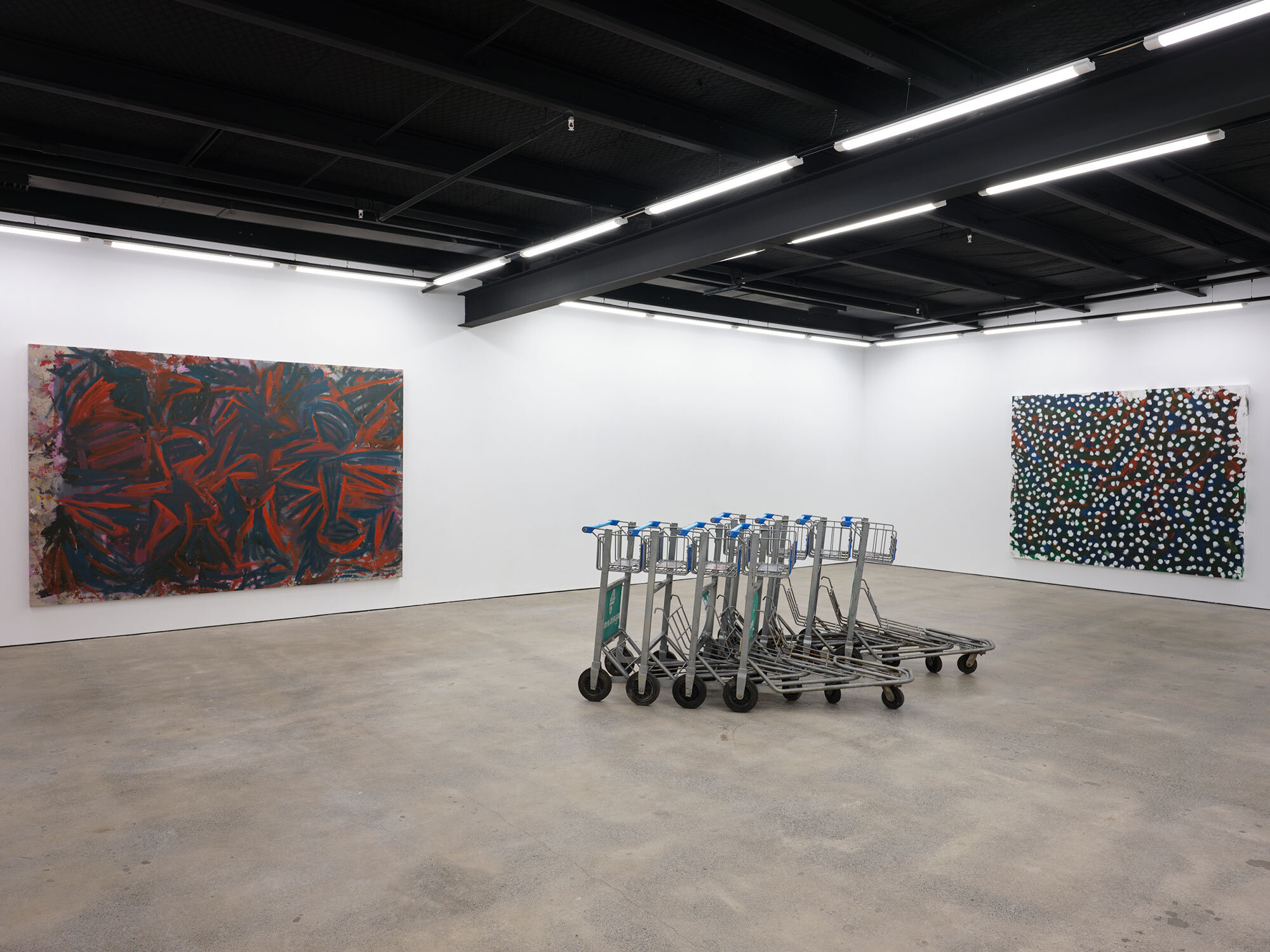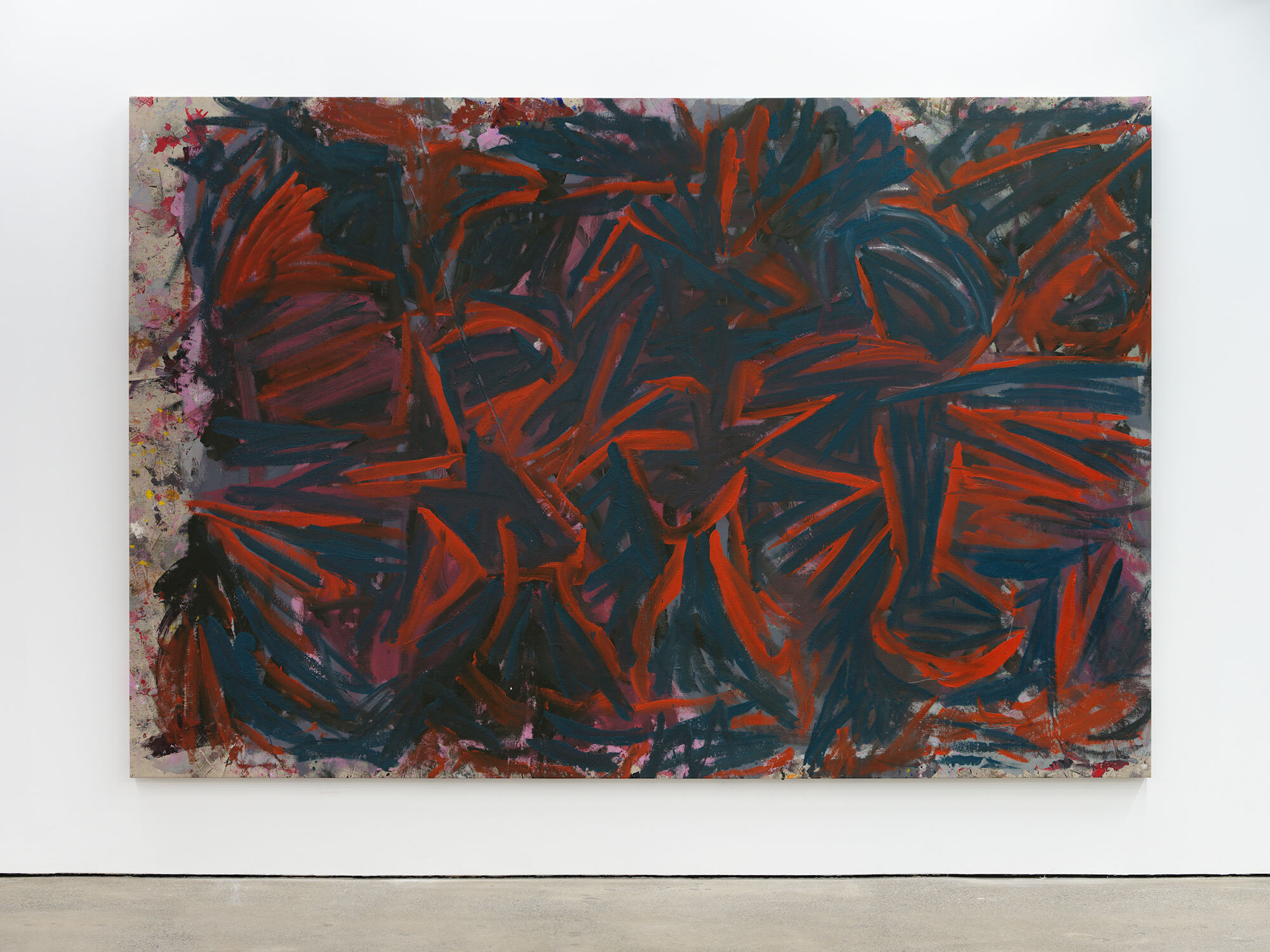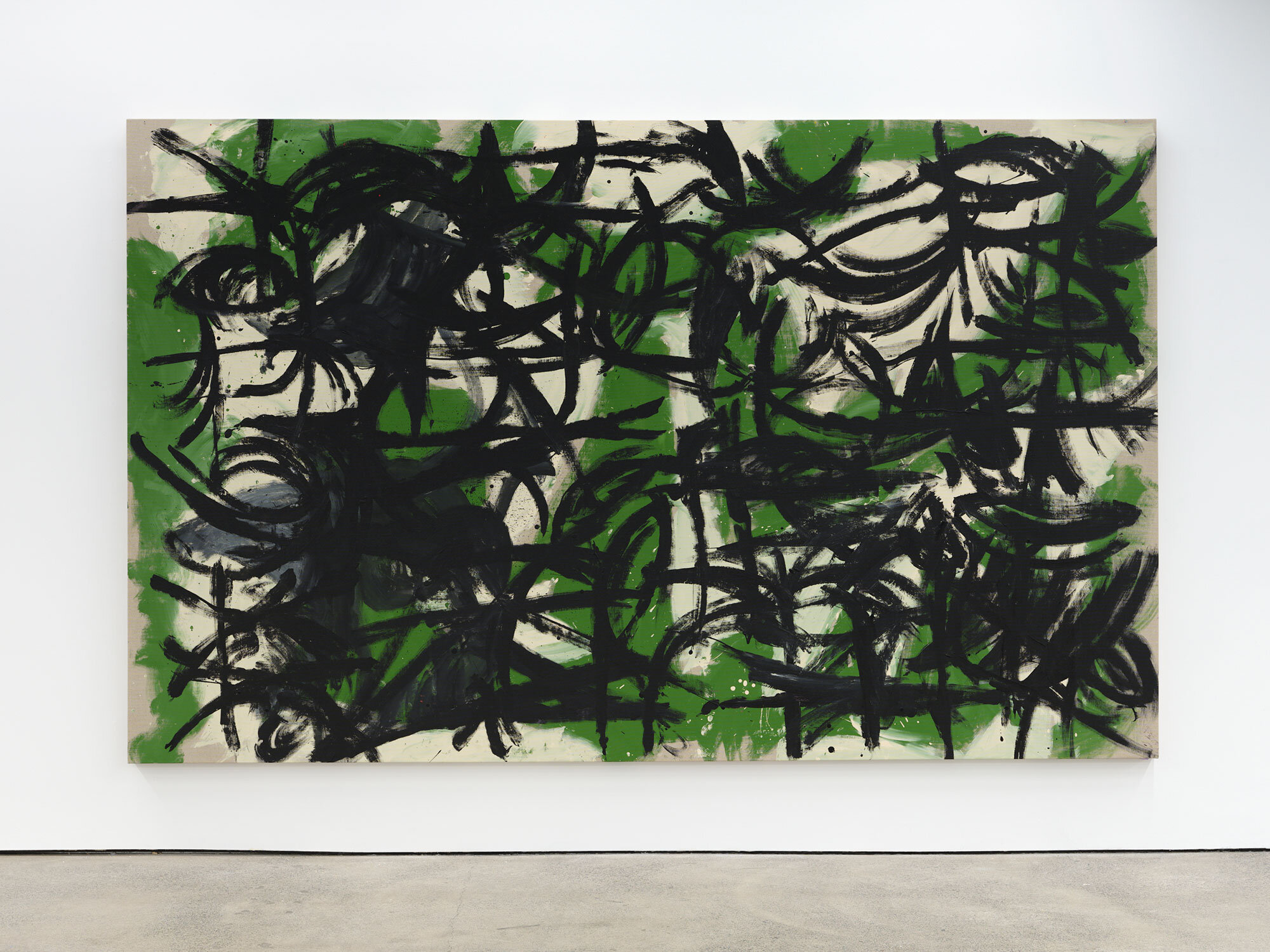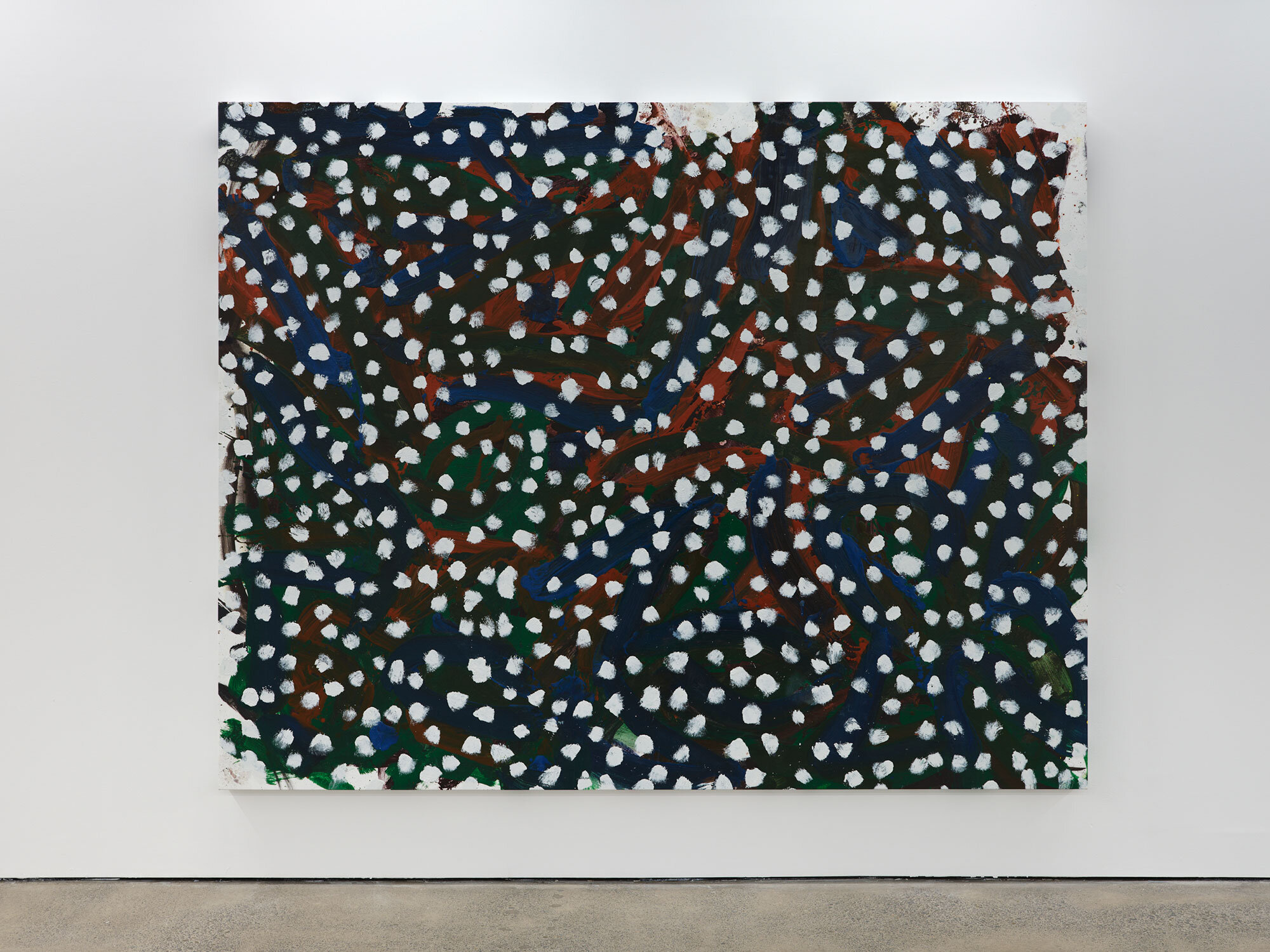OSCAR PERRY
MARTIN BAKER FAN CLUB
CATALOGUE ESSAY | VISIONS, AUCKLAND | OCTOBER 2020
Thank you for waiting.
Mediocre passengers are now invited to board, followed by passengers lacking business acumen or general leadership potential, followed by people of little or no consequence, followed by people operating at a net fiscal loss as people.
– Simon Armitage
For Oscar Perry, painting is a passport to board the inexplicable; to lasso those amorphous thoughts creeping on the cusp of cognition. The Melbourne artist finds inspiration in tangents and missteps, made possible by wanderings of the mind and foot. He does much imagining in and of his paintings, creating them for fictional settings that will not come to pass.
Ploughing through a modernist, abstract expressionist lineage, Perry caches his paintings with the perceptual debris of patient observation. Recently he has been contemplating the role of a painter; thinking of his own practice as codified reconnaissance with the world. He analogises this act of deep looking to a scene from an ‘80s film, where the broken-down protagonist is wheeled out into the garden of a cottage hospital, blanket on lap, left to look for hours in silence. This romantic-pathetic idea of observation has become a totem for the moment, where the world has been forced to retreat and watch and contemplate in the umbra of Covid. We are all in a state of social paraplegia, forced to look – but not touch. Of strange conceptual weight for Perry when crafting this series was Turner’s painting Fire at the Tower of London (1841), which ‘became a sort of alarm’ resounding the role of the painter in documenting a failed state. A self-described ‘pathetic history painting’, Painting for Airport Lounge. JFK. Defunct sees the artist reanimate the defunct energy and emptiness of airports in the year the flights stopped. Working on linen for the first time, his defensive application of oils and acrylics resembles a landscape, but not the romantic kind – the kind that is unkind. Foliage becomes barbed wire and outside turns inward as we peer through the tangle of our own crooked perceptions. Behind this scratchy silhouette, a genteel green garden awaits, ready for us to be wheeled into.
The trope of the airport in these works sets a series of paradoxes in full flight. As quasi-temples for the push and pull of the world, airports embalm the emptiness of the globalised hegemony, and yet they also nurture real connections: elation, travel, family reuniting. ‘I like thinking about painting in the middle of that rigmarole’, says Perry, ‘That mixture of doom and excitement’. We are reminded of Marc Augé’s ‘nonplace’ – anthropological spaces of transience where humans remain anonymous; sites not meaningful enough to be considered a ‘place’. At first, these nonplaces are liberating and fertile, with ample room to think, but then that veneer starts to crack as the vacuousness becomes viscous. Airports, for Perry, are microcosmic of contemporary urban existence; with its enslaving information loops and industrial time inside a spatio-temporal grid. He has always been fascinated with these embassy-style neutral sites where culture is ostensibly devoid. In 2017, he experienced their strange liminality when he was marooned for seven days in various airports – including Norway, Stuttgart, Ukraine and Hong Kong – after delays from a snowstorm in Europe and a plume from the Russian Shiveluch Volcano. The artist imagines what these spaces would be like filled with art in Painting for Airport Lounge. Stuttgart. Defunct. With a neo-expressionist timbre, frenetic brushstrokes summon beaks, wings and claws, while heat emanates from Perry’s volcanic application of vermilion and primordial pooling of painterly energy. Lava gushes between tectonic plates and the earth’s crust opens in infernal rage, as if we are witnessing some sort of cosmological crunch. And yet there’s a softness to this mural painting for a fictional airport lounge, with echoes of Turner – master of the abstract sky – in Perry’s swooshes of night-time navy, bestowing an odd sense of soothing, and cooling.
In this hour of empty airports when flying has almost become taboo, Perry’s installation of airport trolleys offers viewers a displaced slice of the aesthetics and anticipation preceding a flight. He provides a space for the act of looking and for filling time, an idea siphoned from the psychogeographic work of Will Self, who incarnates the contemporary importance of the dérive: an unplanned journey through a landscape devised by the French Situationists. Self describes the dérive as an escape from the iron-bound metrics of late capitalism, suggesting that it actualises radical subjectivity and the liberation of self, enabling us to step beyond calibrated time and experience evanescence. This kind of atemporal ambling – extending the legacy of the flâneur – is fundamental to Perry’s practice, and for his latest series the artist has been roaming around Melbourne scribbling notes and drawing, whilst also painting en plein air for the first time. All the while, at the forefront of his mind has been Caspar David Friedrich’s Wanderer above the Sea of Fog (1818), an ode to the natural sublime ostensibly at odds with Perry’s strain of airport modernism. Alpine Blanket brings to life this allusive nod to discovery – sans the Romanticism – as earthen greens, blues and umbers squirm beneath a thin veneer of snowfall. A whole planet eclipsed by a dazzling constellation of stars. The earth; receding. There is a feeling of weightlessness to this work, of sky and of flight, anchored by the temporal markers of Perry’s brush. Conjuring cavitary depth, his painterly layers are like transparencies, unrelated yet inseparable. Though the snow has descended evenly, there is the sense that it slowly will consume the canvas one flake at a time. This work – and the rest – signals a farewell to that which is disappearing; to self, to subjectivity.




